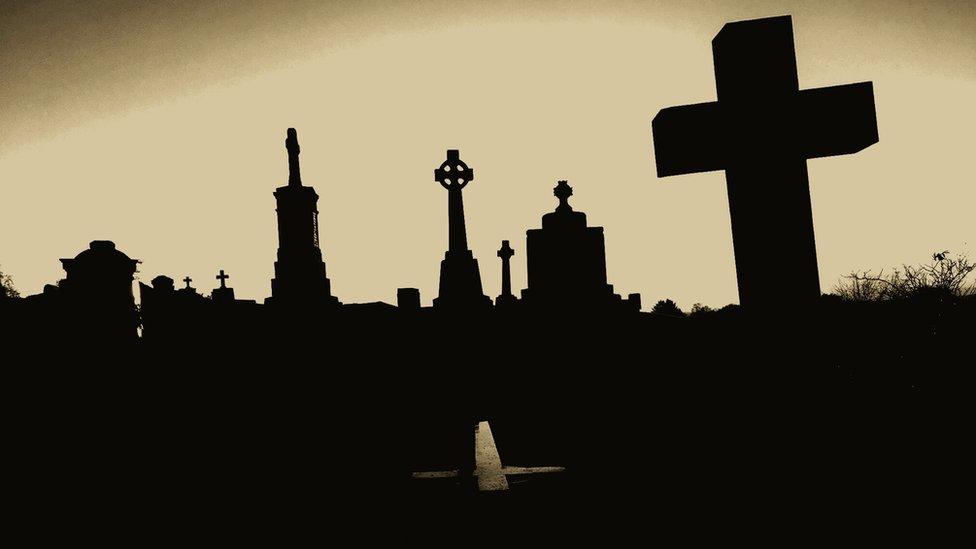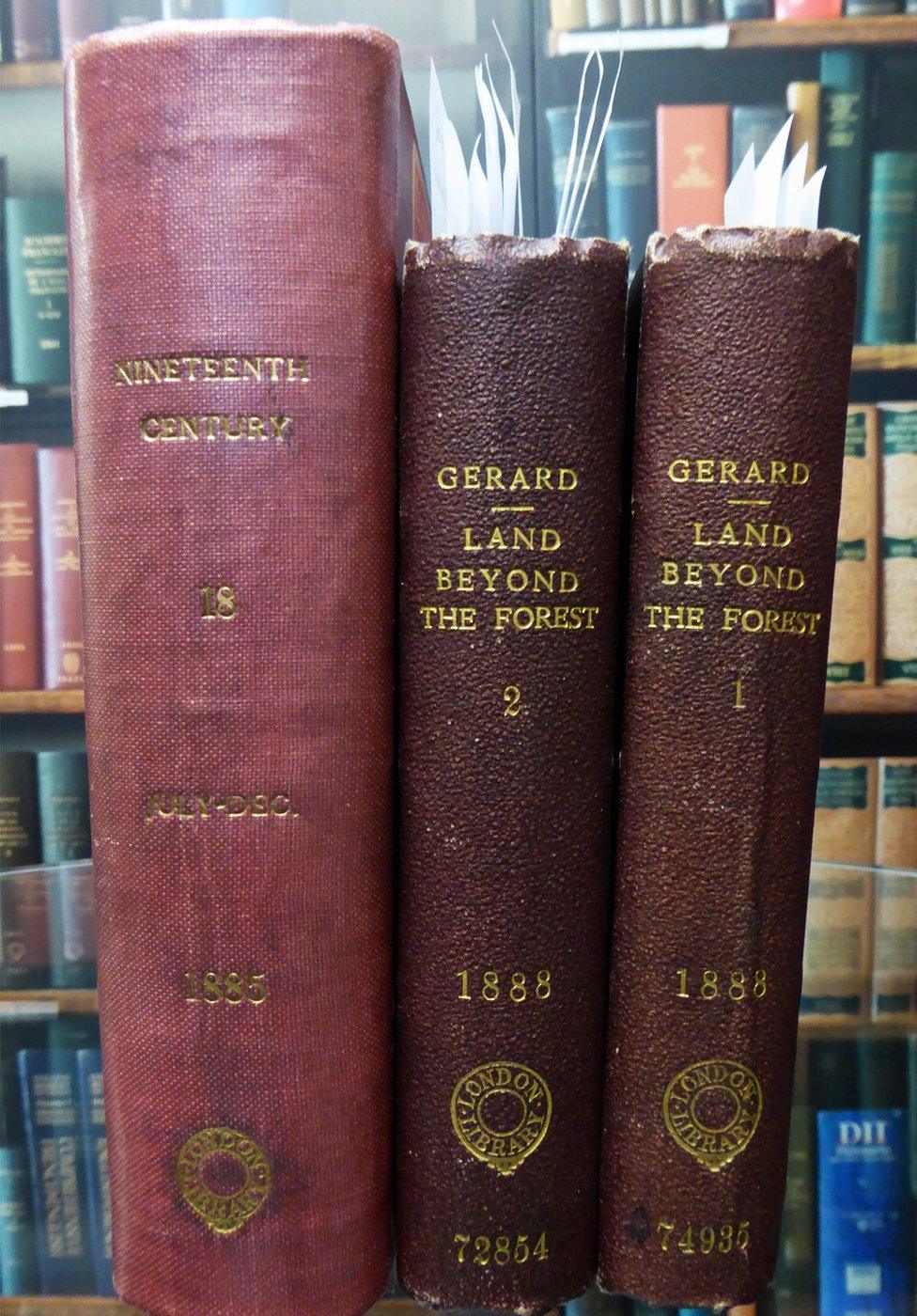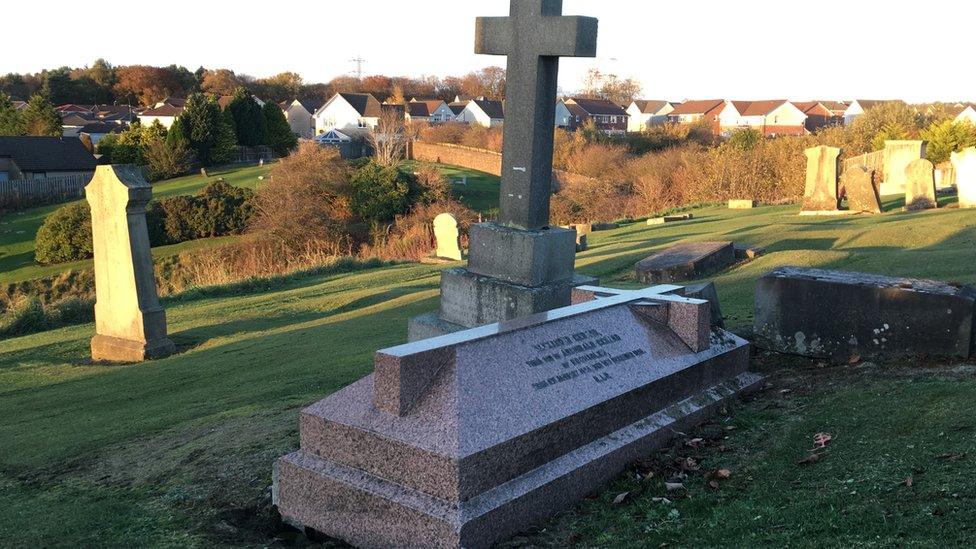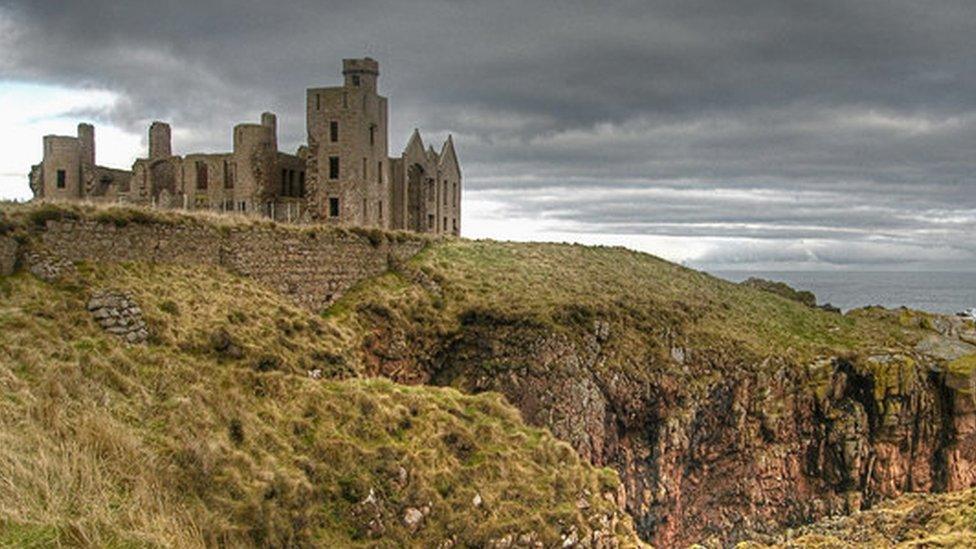The Scottish writer who inspired Bram Stoker's Dracula
- Published

Emily Gerard's brothers are buried in St Joseph's cemetery in Airdrie
When Bram Stoker was researching his world-famous novel Dracula one of his biggest influences was a woman who was born into a wealthy family in the Lanarkshire town of Airdrie.
One of the UK's leading literary institutions has establish how Stoker had a copy of Emily Gerard's book on Transylvanian folklore and took notes while researching his own novel.
Gerard's The Land Beyond the Forest is credited with introducing Stoker to the concept of "nosferatu", a vampire-like creature who sucks the blood of innocent victims.
She wrote her book after spending two years in the mid-1880s in Romania with her husband, who was posted there as an officer in the Austro-Hungarian army.

Max Schreck starring in Nosferatu, the classic 1922 silent movie based on the Dracula legend
In her book, she wrote: "More decidedly evil is the nosferatu, or vampire, in which every Romanian peasant believes as firmly as he does in heaven or hell.
"Every person killed by a nosferatu becomes likewise a vampire after death, and will continue to suck the blood of other innocent persons till the spirit has been exorcised by opening the grave of the suspected person, and either driving a stake through the corpse or in very obstinate cases of vampirism it is recommended to cut off the head, and replace it in the coffin with the mouth filled with garlic."
A decade later in 1897, Stoker published Dracula, based on reading on the subject he had done in the previous seven years.
Four hundred miles away from Airdrie, the London Library has just discovered how Stoker researched his project.

Emily Gerard wrote The Land Beyond the Forest about her experiences in Transylvania
Stoker was a library member and they have found 25 books he used as reference material.
Many have notes in the margin in his own hand plus dog-earred pages for finding relevant passages.
According to the London Library's Philip Spedding, Emily Gerard was one of Stoker's main two sources.

Bram Stoker owned a copy of Emily Gerard's book

In fact, the Irish author's main reference book "The Land Beyond the Forest" was one he actually owned rather than having to borrow from the library.
Mr Spedding says Stoker's son gifted his father's copy of Gerard's book to the library in 1935.
It was on a list of books cited as sources for Stoker's work.
The list led to a recent trawl of the library shelves.
According to Mr Spedding, the "hairs on the back of my neck" stood up when he found the very books Stoker had used in the library, complete with the exact markings he had made in his notes.
"You think 'these are the books that encouraged this man to write one of the most remarkable books in the English language'," he says.
"Certainly one of the most remarkable characters, that has somehow chimed with us ever since he wrote it."

Bram Stoker wrote the early chapters of Dracula in Aberdeenshire

Back in Airdrie, do local people know anything about Emily Gerard's role in inspiring the Dracula legend as created by Bram Stoker?
Well, at least one person does.

Chris McKay has taken on the role of graveyard historian for St Joseph's Cemetery.
The ground it lies on belonged to Emily's father, Archibald Gerard, a wealthy landowner in the Rochsoles area who rented it as a burial ground for St Margaret's Church.
A number of Gerards are buried in the cemetery including Archibald's son General Sir Montagu Gerard, Emily's brother.
Mr McKay says Emily's brothers were accomplished and interesting men but he was astonished to find her Dracula connection.
He says: "When I speak to people and tell them about my research and I tell them about Emily Gerard coining this phrase they can't believe it was someone from Airdrie.
"I was stunned to find out myself."
In Aberdeenshire the ruined Slains Castle at Cruden Bay is thought to be a main inspiration for Bram Stoker's dramatic setting of Dracula.
And while Emily Gerard left Scotland for a life in Central Europe and was buried in Vienna, we can still perhaps add St Joseph's cemetery in Airdrie alongside it on that spooky list.
- Published13 November 2017

- Published24 October 2018
